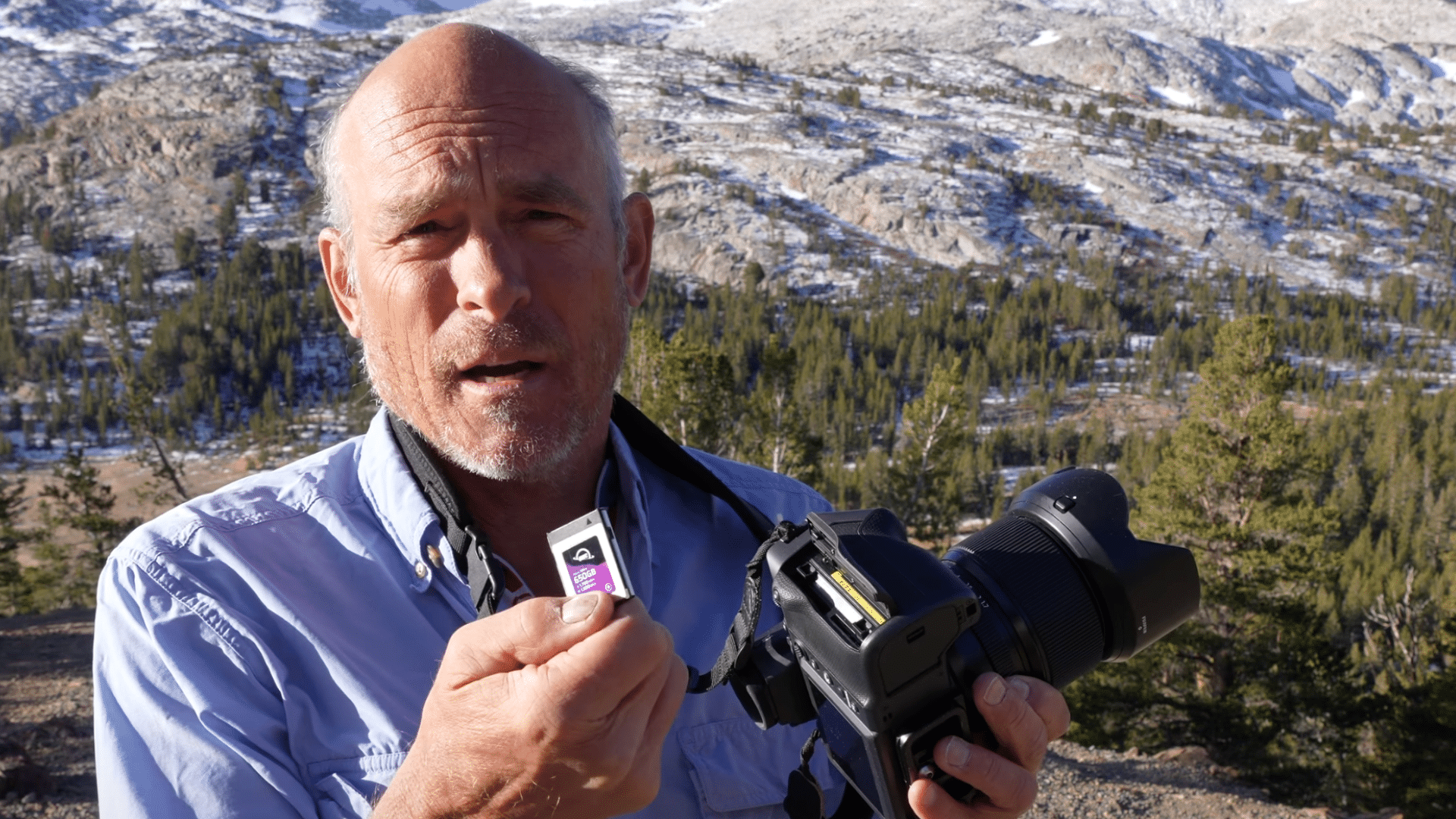
Many of today’s digital cameras offer dual card slots, increasingly a 2-slot combination of CFExpress Type B or A + SDXC. Some are still dual SDXC, but the same ideas apply.
I’m a professional photographer by trade. In the video below, I discuss how to effectively use dual card slots in digital cameras, particularly for minimizing the risk of image loss from accident/theft/etc, and why I do what I do when traveling for weeks at a time.
Key points
- Dual slots offer redundancy in case one card has an issue.
- High capacity cards mean no fumbling to swap out a full card, and thus, no risk of losing that card down a crack in the rocks or creek.
- A large-capacity secondary card allows for weeks-long shooting on extended trips.
- Theft of computer and/or backups from vehicle are backstopped by using high-capacity cards and not erasing until home and all is backed-up.
Professionals should be using pro-grade cards
Over the years, I’ve had too many well-known brand-name cards fail (corrupt images) or literally come apart at the seams. I now use OWC Atlas camera cards exclusively with impeccable reliability and speed, as well as a de facto factory-fresh reset via OWC Innergize.
My choice of cards for my work are the OWC Atlas Ultra and OWC Atlas Pro line, using the hyper-fast Atlas Ultra as the main/primary store (CFExpress Type B preferred), and a higher-capacity Atlas Pro SDXC as the backup card.
Reviews and more: CFExpress Type B, SDXC

View all posts by Lloyd Chambers… Lloyd’s photo web site is diglloyd.com, computers is MacPerformanceGuide.com, cycling and health are found at WindInMyFace.com, software tools including disk testing and data integrity validation at diglloydTools.com. Patreon page.










Lloyd’s system may work as long as he carries either the camera and/or media cards on his person while on a meal break or while away from his vehicle or hotel room.
Regardless the risk of theft or damage still exist when carrying the camera original media on your person. An option to consider would be to back up to the cloud on a daily basis as an additional storage destination for the camera original media.
As a professional with over a decade of digital asset management experience I abide by the mantra “One is none, two is one and three is just right” in regards to the number of reductant clones from the camera original media.
In my professional experience choosing NOT make daily back up clones from the camera original media instead opting to fill up a single 1 TB media card with weeks of shooting is not a secure nor wise DAM (Digital Asset Management) workflow.
There is always the possibility the 1 TB card in the camera which contains weeks of images could be stolen, accidentally erased or corrupted . Not having multiple clones of the camera originals on external SSDs, HDDs or in the cloud is an ill advised workflow with little recourse should disaster strike.
In addition it is critical to download the camera original on a daily basis using DAM checksum software as well as visually reviewing the camera original images to sort out and rate images for final color grading processing.
Data security relies on designed a DAM workflow which involved creating several clones of the camera original stored on multiple devices and/or locations not solely on a single piece of media waiting to be downloaded weeks later.
James’ ideas are good ones, but make lots of false assumptions about my practices. I discuss my download and backup workflow in my Nov 20 post.
OF COURSE I download and make multiple redundant backups, usually every day. And if the cards were to overflow, smaller backup drives can be carried in my pack, just in case there is a break-in of my van and loss of my backups and computer.
The key point is that by not erasing the cards, both risks are addressed: the risk of theft of camera/cards and the risk of theft of computer + backups. Every time I go out on a hike, there is that risk that upon return I will see a smashed window and not find my computer and backups any more. If I’ve erased the cards…
Cloud backup: often have NO INTERNET for 3-4 days at a time. When I do, it often quickly degenerates to 30K/sec or so, even with a cell phone booster. A single GFX100S image at 30K/sec would take 4270 seconds (1.2 hours)!. Do the math on how long 200 shots in just one day’s shoot would take. And even if it were 1000X faster, my entire monthly “ultimate” maxed-out cellphone bandwidth would be consumed in a single day’s shooting. Unrealistic squared.
As for checksumming, I do that with the best program on the market: diglloydTools IntegrityChecker, a true professional tool that does everything, not just images. Which I wrote starting 15 years ago. It works on camera cards, on the computer, on the backups—everything. Dedicated workflow solutions do a more restricted and less complete job.
As for “every day” advice… try hiking all days for many miles in the mountains and see how you feel about doing office work at 9 PM when you not eaten yet. It is unrealistic good-sounding advice (by all means do so if you can!), but advice that ignores the reality of the rigors of “in the field” photography.
My Nov 20 post addresses some of the download/backup workflow stuff. It was written but not yet published when I wrote the first piece, so I could not reference it in that article. That might have saved some confusion—but it was not under my control.
https://eshop.macsales.com/blog/87288-in-the-field-download-workflow-as-a-professional-photographer/